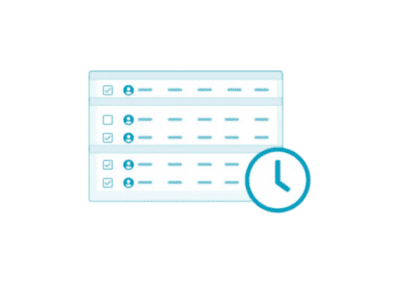There are many and varied types of employees. They all require slightly different approaches when you’re leading them. All kinds of employees exist in every business; therefore, a one-size-fits-all approach will never work. You may need to adapt your leadership style to cater to all the different types of employees.
However, not all employees stay the same throughout their careers. Some of the main types of employees may even overlap in characteristics. Some types of employees are also phases that employees move through as their circumstances evolve.
In this blog, we will run through the most common types of employees in organizations and how to motivate them.
The Social One
This group of employees excels at building relationships and frequently earns the title of a “people person.” They have friends throughout the office and are always willing to grab a coffee, talk through a problem, or go to a happy hour. These workers tend to be most friendly in a group that gets along with almost everyone. They are energetic towards group activities.
How to motivate them
This employee is popular across the workforce, meaning they can be leaders within the correct culture. When they receive support, consultation, and involvement, they feel motivated.
Create an excellent social working environment by introducing social events, a personalized approach, and a people-centered culture. They also value it if you publicly stick up for them. Regularly ask them for their opinion on making decisions and take them into your confidence.
The Introvert
They love the work they do, and they’re good at it. They hit their goals and contribute to the company’s growth but are shy. These employees can be tremendous assets; they usually work hard and have great ideas but don’t speak up in meetings and are not talkative in group settings.
How to motivate them
It’s essential not to assume that their silence means they don’t have opinions or good ideas. Set them up to successfully communicate with their peers and management. Give this employee clear meeting agendas so they can prepare their thoughts and talking points. If they want quiet, uninterrupted time to work by themselves, give them that space.
Have one-on-one meetings to check in with how they’re feeling. Give them a safe way to air concerns or share ideas. Over time, they may come out of their shell in the office and feel more comfortable speaking up.
The Leader
These types of workers are always ready to dive into the next task. In every meeting, they want to talk first and love taking the lead on team projects or company initiatives. They offer feedback to their peers, and sometimes, they may even proactively assign duties within the team. They’re sharp and motivated, and they take initiative.

How to motivate them
Being a leader is second nature to these groups, but they could rub others the wrong way if they don’t hold a leadership role in the company. It’s essential to utilize their leadership and develop their strengths while making sure they’re not overstepping their roles and frustrating others.
Encourage them to pursue their ideas and take ownership of them. Give them responsibilities within the team they can enjoy. If they show true managerial promise, help them hone these skills. Assign them new and challenging work where they get exposure to leadership. It will help grow their career, impact the company’s bottom line, and help retain them.
The Entertainer
These personalities are the ones living for the moment. They are easy-going and are one of the more famous personalities in the workplace. An entertainer is one who most people like to be around. They have a very happy-go-lucky attitude, which attracts many people.
How to Motivate them
You can motivate this personality by providing a solid work-life balance. A fun, informal work environment will encourage these people more than a full-on corporate setting. Having a harmonious relationship with team members also helps retain these employees.
The Passive-Aggressive
One of the most frustrating types of employees can be the passive-aggressive kind, as they are not an easy group to deal with. They may take a long time to respond to messages or may never respond. They also tend to fail to mention essential pieces of information to trip you up on purpose. In other words, they want you to leave them alone, so they passively resist your attempts to engage with them.
The main issue is that you can’t just leave them alone if you need something from them or need their participation. You need to be persistent and calm. They may not respect you, so earning their respect may be a case before they’ll be happy to work with you.
How to motivate them
The passive-aggressive can be frustrating, but the worst thing you can do is blow up on them. The genius of this type of employee is that they have plausible deniability. If they don’t respond to you, they might say that they “were busy.”
It’s hard to tell if they are or if they’re lying to you. That’s why you must keep cool; it can be frustrating.
It’s important first to identify this characteristic in an employee and proceed with caution. Creating a safe space with them and communicating carefully can lower the tension they often create. You can motivate these employees by making them feel comfortable in their workplace through clear and effective communication.
The Creator
This group seeks innovation, creativity, and change. They like problem-solving and developing work in cutting-edge, innovative organizations or challenging environments. Involve them in ideas generation, giving them problems to solve and projects that need originality.
How to motivate them
Motivate them by recognizing their creativity and rewarding them for innovation. Avoid putting them in a routine role for too long, as they get bored easily and become demotivated quickly. The more stimulating environment you can provide, the better. Brainstorming is an activity that they thrive on, so be sure to accommodate this for such employees.
Conclusion
As you now know, there is no one source of motivating factors for employees in your business. Although employees can be put into these various categories, they’re all still different from one another. Some can be a mixture of these titles, and some might be none, but as long as you cater to these different motivating levels as much as possible, you’ll create a happier and more productive workforce.




